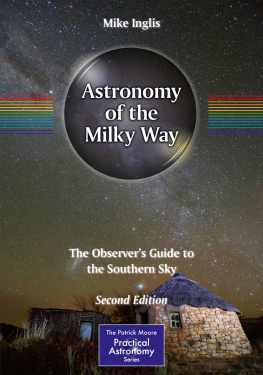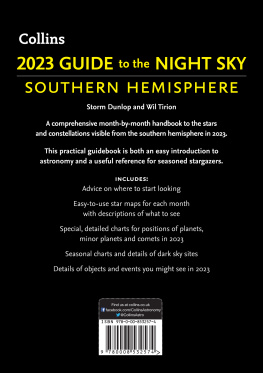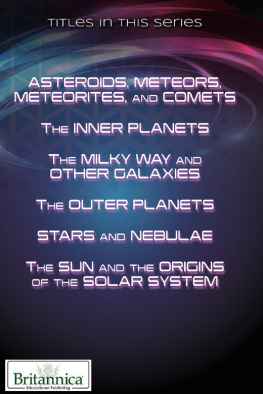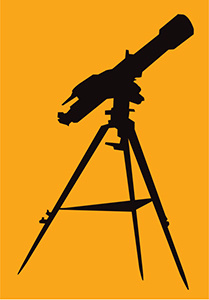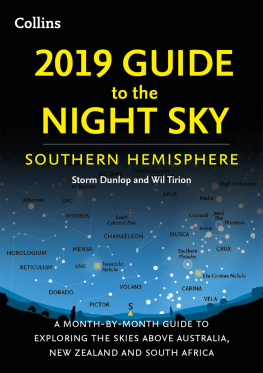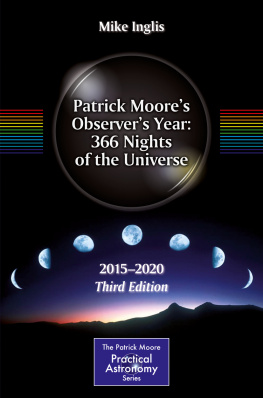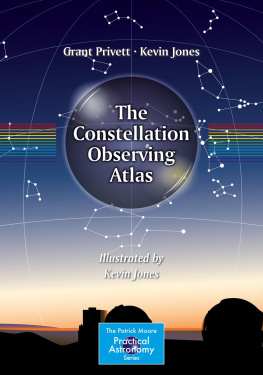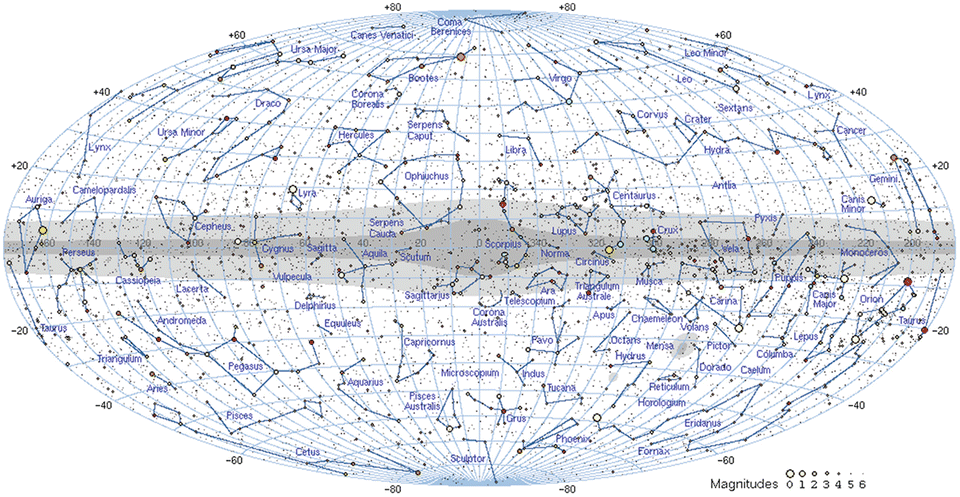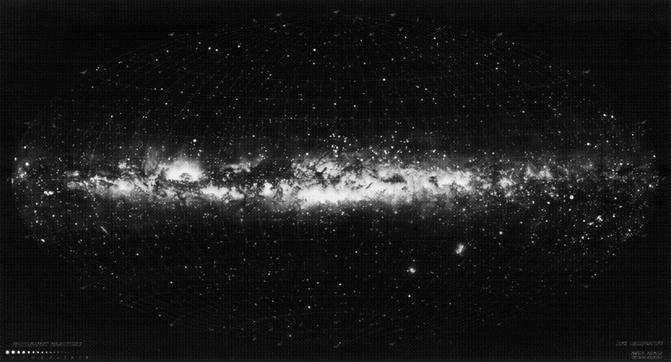1. The Milky Way
1.1 How to Use This Book
Most of us are familiar with the Milky Way. We may be lucky enough to live in a dark location and can see the misty band of light that stretches across the sky (see Fig. ). Others may live in an urban location and so can only glimpse the Milky Way as a faint hazy patch that envelopes several constellations. But how many of us make a point of observing the Milky Way as a celestial object in its own right? Rather few, it seems, which is a pity as it holds a plethora of wonderful delights, ranging from deeply colored double- and multiple-star systems to immense glowing clouds of gas and mysterious dark nebulae that literally blacken the sky. It also holds quite a few star clusters that literally look like diamonds sprinkled on black velvet, not to mention the occasional neutron star, black hole and possible extrasolar planetary system! In fact, you could spend an entire career observing the Milky Way.
The Milky Way passes through many constellations; some are completely engulfed while others are barely brushed upon. Also, it passes through both the northern and southern parts of the celestial sphere, making it a truly universal object, allowing it to be observed from anywhere in the world (see Star Chart ).
The object of the book is not to give an introduction to the astrophysics of the galaxy we live in the Milky Way there are many books listed in the appendices that can do that, but rather to introduce you to the many objects that can be observed that lie within the Milky Way. It may come as a surprise to you to know that you can observe the Milky Way on any clear night of the year, from any location on Earth. So one could be observing from, say, Australia or Scotland, it wouldnt matter, as the Milky Way, or rather, particular parts of it, will be visible to you.
Star Chart 1
The Milky Way in Galactic CoordinatesCompare this star chart that shows the Milky Way superimposed over the constellations, with the image of the Milky Way at the end of the book. Note that the contours of the Milky Way are approximate. (Chart courtesy of Richard Powell.)
We have covered the complete Milky Way in this book, and so that means that there will be areas of it, and thus constellations, that may be unobservable from where you live. For instance, the constellation of Crux is a familiar one to observers living in Australia and New Zealand, but completely unobservable to European observers. Likewise, Camelopardalis and parts of Cepheus may be familiar friends to northern European observers, but are hidden from view of our southern colleagues. What this does mean however is that this is a truly universal book that can be used by any astronomer anywhere in the world.
Fig. 1.1
The Milky Way (Courtesy of the Lnd Observatory.)
Many of the objects mentioned will, of course, need some sort of optical equipment, but a significant number are naked-eye objects, which is appropriate, as the Milky Way itself is a naked-eye object and the biggest one at that! But there are also quite a considerable number that only require small telescopes or binoculars, and by small we mean, say, 6-cm to 10-cm aperture. There are also those objects that will require a somewhat larger aperture, say, 10-cm to 25-cm, and the majority of the faint objects are in this aperture range. But not to exclude those observers with large telescopes we have also mentioned a few objects where very large apertures will be needed. Thus there is something for all amateur astronomers to see.
But remember that the pre-eminent types of objects that are just perfect to view with binoculars, and are truly impressive, are the many rich and awe-inspiring star fields or star clouds. This is what makes the Milky Way so spectacular. On a clear evening, one can observe Cygnus or Vulpecula or Sagittarius or Centaurus, and literally be transported to other realms. The sights that fill the field of view cannot really be described, and once seen are never forgotten.
It goes without saying that a good star atlas is an essential part of every amateur astronomers arsenal, and fortunately there are many fine atlases to be had. A fine example of an atlas that is perfect for naked-eye observing is the redoubtable Nortons Star Atlas . Armed with this and perhaps a pair of binoculars will give a lifetime of opportunity. For those that need a more-detailed atlas, there are two that warrant attention, SkyAtlas 2000.0 and Uranometria 2000. Both of these cover most, if not all, of the objects mentioned in the book, and will allow you to locate and find most of the fainter and not easily recognizable objects. It is also possible these days to have planetarium software on a computer, and these, too, are fine tools to have, many allowing detailed star charts to be printed.
An astute observer will notice that the boundary of the Milky Way that we have adopted may not be the same as that in, say, Nortons, or an older star atlas. We have in fact taken the boundary to be that identified by the Dutch Astronomer Antonie Pannekoek, who measured the density of stars in the sky and ascribed a limiting factor to the star density that enabled a boundary to be placed on the visible Milky Way. We are of course completely immersed in the Milky Way and most stars, nebulae and clusters that we observe are in fact within the Milky Way.
However, there is a downside to adopting this boundary, as many of the favorite objects are left out if they do not lie within the Milky Way. Examples of such passed-over showpieces are the Pleiades and the Andromeda Galaxy, to name just a few.
The layout of the book is straightforward. The constellations that lie within the Milky Way are more-or-less
For the sake of completeness, however, at the end of each chapter we have listed, for both northern and southern observers, those Milky Way constellations that are also visible but with the above caveat in mind! Armed with this knowledge, you can go out and observe quite a large proportion of the Milky Way on any clear night of the year, from anywhere in the world.
In addition, we do not structure each chapter in any formal way, but rather in a manner that seemed appropriate. For instance, in Orion, we start of by describing the many wonderful double and multiple stars that the constellation has, whereas in Cassiopeia, we begin with detailed descriptions of its many glorious star clusters.
Throughout the book are many simple star charts, and they are just that simple! They are not meant to take the place of a star atlas but are rather a pointer in the right direction. Also, I have had the opportunity to include quite a few wonderful photographs and CCD images of many of the objects described. These were taken by gifted and talented astrophotographers and astro-CCD imagers and to include them in the book is a privilege. You may notice, by their conspicuous absence, there are no drawings of any of the objects in the book. The reason for this is simple. Not only can the author not draw but drawings or sketches, particularly of astronomical objects, are very personal constructs and more often than not do not resemble the generally recognized shape or form of an object. Rather they describe what you, the observer, can see at that particular moment. It is no exaggeration to say that one can take two observers, show them the same object through two identical telescopes at the same time, and ask them to draw it, and you will end up with two quite different and distinct drawings. Furthermore, as the astronomer David Ratledge says in his book on the Caldwell objects, how can one really sketch something in detail when you are using averted vision?

